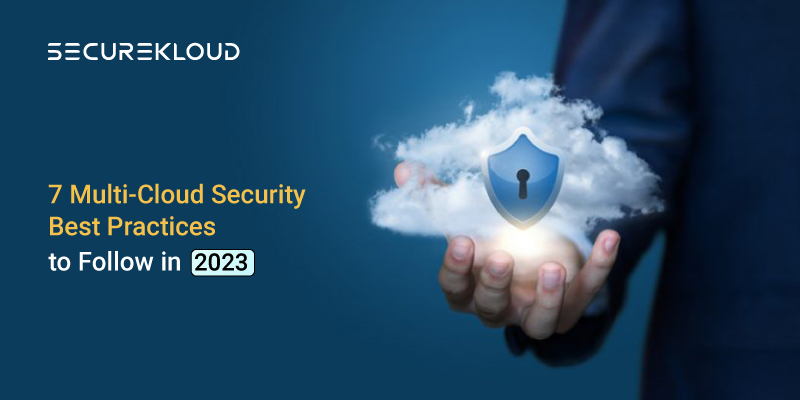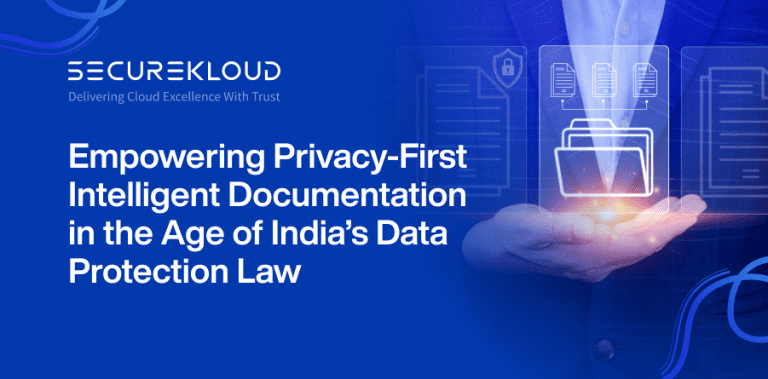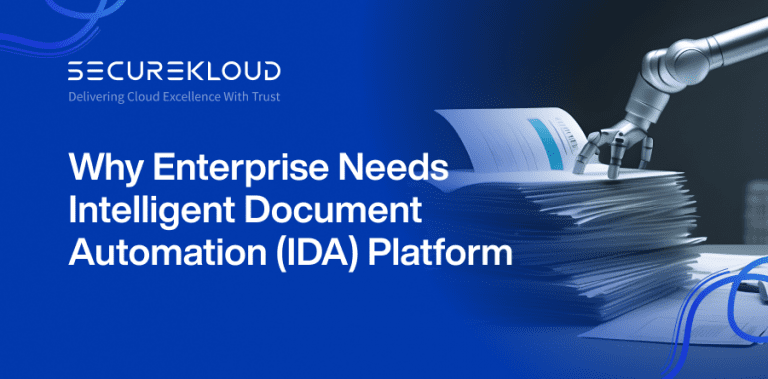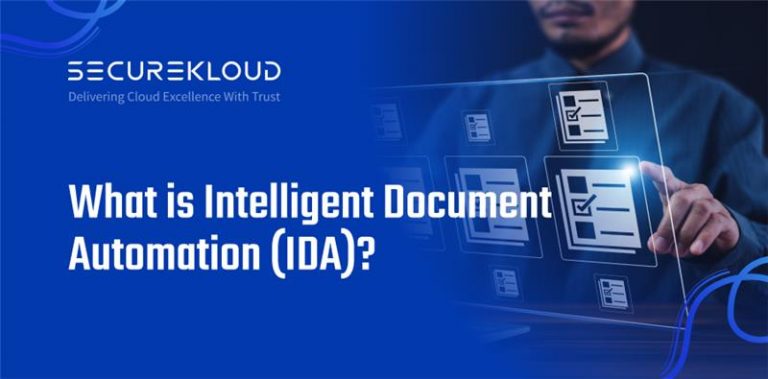- 7Minutes
- 1224Words
- 4Views
Recently, enterprises are increasingly opting for the multi-cloud route due to its rising popularity. Multi-cloud offers many advantages and enables a rapid pace of development for enterprises. While enterprises gain the multi-cloud benefits surrounding cost and efficiency, it also makes the management process more complex, requiring more attention and staffing resources. This complexity is due to each cloud having its own siloed systems and configuration.
Relying on multiple vendors and clouds also exposes your environment to cyber-attacks and increases the overall risk. Therefore, multi-cloud security should not be an afterthought if you wish to keep your assets and data safe from ever-increasing cyber threats.
By now, you have probably adopted a multi-cloud computing model for your business. But do you have a robust multi-cloud security strategy that safeguards your multi-cloud environment? This blog post discusses the unique challenges of the multi-cloud computing approach and offers a list of best practices that you can implement to design and significantly improve the security of your multi-cloud deployments.
Common multi-cloud security risks for your enterprise
It is a known fact that multi-cloud offers increased scalability and flexibility. However, the less-known fact is that it also comes with increased complexity and security risks. Safeguarding your multi-cloud setup means there is a larger environment to secure and thus a greater chance issues will arise.
Tools or strategies from a single cloud provider or your custom bash scripts for on-premises data centers will not help you overcome the challenges of multi-cloud architectures. The following are a few important security challenges to consider while using services from multiple cloud providers:
- Managing more than one infrastructure – The team must configure, manage, monitor, and secure more than one infrastructure.
- Increased attack surface – Multi-cloud deployment means you have a larger landscape to manage and gives attackers more chance to infiltrate the environment.
- Less visibility adding complexities in ongoing maintenance – In a multi-cloud setup, it’s difficult to obtain visibility into each platform thereby making ongoing maintenance a complex process.
- Integrating security policies across cloud providers – It’s challenging to connect and integrate various policies from different vendors as each of them has its own set of standards, features, and granularity.
- Complex monitoring process – With each vendor offering its own unique cloud monitoring options, you need to ensure that your monitoring must target the full scope of your entire cloud deployment.
What are the top multi-cloud security best practices to follow in 2023?
Despite the multi-cloud security challenges, enterprises are largely adopting these models to leverage the functionality and reliability of multi-cloud services. As managing the complex multi-cloud architecture is challenging, enterprises require a sound strategy to help combat these challenges and protect their infrastructure. Get to know the top 7 multi-cloud security best practices that can help you prevent, detect, and alleviate breaches so you can get the most out of your cloud services.
- Set up a multi-cloud monitoring strategy
Unlike the real-time monitoring offered by a public cloud provider, a multi-cloud monitoring strategy demands the integration of various monitoring tasks. This creates a holistic view of your infrastructure, nodes, services, and applications from different platforms into a single location.
As part of the strategy, it is also vital to have a tool that can automatically create alerts, implement self-healing methods, or provide guidance during remediation. This reduces manual intervention and enhances the efficiency of your multi-cloud monitoring process. - Leverage automation to maintain the security of your multi-cloud setup
Using a process that automates various tasks, such as infrastructure operations, app deployments, security upgrades, etc. minimizes the human risk factor. For instance, incorporating DevSecOps methodology is an excellent way of adding automation to address cloud computing security. The major advantages of adopting the automation approach are:- Enabling businesses to stay agile
- Ensure consistency and accelerate cloud operations
- Reduces the risk of human errors
- Prioritize complete visibility and get to know about shared responsibility
Complete visibility should be a priority when implementing the cloud. But when it comes to multi-cloud computing, it can be challenging to monitor and manage workloads across cloud service providers. Hence, it’s imperative to develop a single pane of glass for monitoring and managing your cloud resources. This approach enables centralized visibility and management which ensures security and compliance across multiple environments simultaneously.
In addition, it is important for you to be aware of the vendor and customer’s model of shared responsibility. As per this key concept, the cloud service provider is responsible ‘for’ the cloud whereas, you are responsible to safeguard everything ‘in’ the cloud. For example, your team can plan their share of responsibilities such as:- Making sure that your workloads are protected
- Ensuring that your data is compliant
- Checking if access control is properly governed
- Maintain compliance across multiple clouds
Each industry must adhere to specific regulations applicable to them and hence the first step towards achieving compliance in multi-cloud will be identifying the same. Similarly, each cloud platform has unique compliance certifications and standards based on which you’ll be running different workloads. Some of the common examples of compliance controls that enterprises need to comply with are HIPAA, PCI, GDPR, CPA, etc. Take advantage of an automated platform to monitor compliance across clouds to ensure continuous compliance across your entire infrastructure. - Consistently back up cloud data and build a disaster recovery plan
Performing routine cloud backups of data and systems should be a priority when it comes to securing your data in the cloud. Your team can use a tool to continuously scan the backups for malicious data. With regard to your multi-cloud environment, you can take backups multiple times a day and keep a separate backup for each cloud to streamline recoveries. In addition to regular backups, you need to design a zero data loss disaster recovery plan as part of your multi-cloud security strategy. This helps in restoring data easily and keeps resources accessible on a reserve cloud, thereby ensuring operational resilience. - Maintain a single dashboard to manage all your cloud deployments
Developing a single dashboard helps you to audit and manage the entire multi-cloud environment. With a single unified control, you can easily track all user activities in your network, receive notifications, and detect and respond to security breaches. In addition to simplifying the multi-cloud complexities, maintaining a single dashboard helps your team to save time and minimize operational costs. - Implement zero-trust data protection
By adopting a zero-trust data protection strategy, you can ensure that your data set is accessible only to authorized users. You can further dissect the user permissions granted for data access. For instance, user authentication steps can include validating your name, password, biometrics, device type, location, and time. As an additional security measure, you can add microsegments to your authentication steps, where must further validate their credentials to process the data for downloading or editing it.
Want to implement multi-cloud security best practices for your business?
Before even initiating the multi-cloud journey, enterprises must consider and account for security needs to protect themselves from security breaches and data thefts. Ensure security is the foundation of your strategy and create a multi-cloud that increases your flexibility without making you vulnerable to cyber threats. Talk to our cloud experts to build a successful multi-cloud security strategy that can put your cloud needs first and allow you to reap all the benefits multi-cloud has to offer while maintaining a fully secure and compliant environment.





